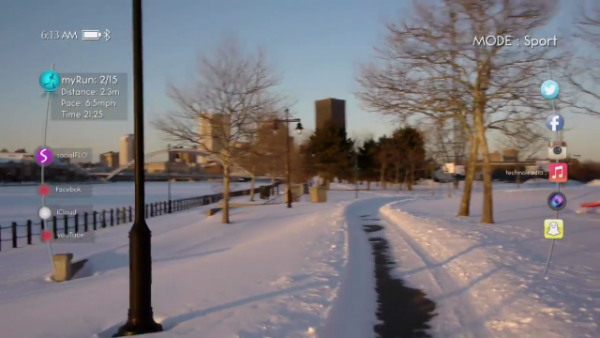Most of the country is still waiting for the sort of super-fast gigabit internet connections available in places like Kansas City, Kansas and Chattanooga, Tennessee. But Google is already exploring the next thing: 10 gigabit per second connections, connections that are over 1,000 times faster than theaverage connection in the U.S. today.
That’s the word from Google chief financial officer Patrick Pichette, who discussed Google’s 10 gigabit experiment this week at a conference in San Francisco, as first reported by USA Today. “After one gig, it will be 10 gigs,” Pichette said at the conference. “So we are already working on 10 gigs.”
The news shows that Google will continue to push for change in the world of commercial internet services, and the timing couldn’t be better.
Don’t expect Google to roll out a service any time soon. “At Google, we’re always looking to make our product better, and keep pushing the boundaries of innovation,” a spokesperson told us. “That is part of our DNA — but we don’t have plans to deliver 10 Gig speeds in the near future.” Even still, the Pichette shows that Google will continue to push for change in the world of commercial internet services, and the timing couldn’t be better.
Yesterday, cable broadband providers Comcast agreed to purchase its biggest rival, Time-Warner Cable, a move that could threaten the progress of internet services here in the U.S. Hopefully Google can keep entrenched players like Comcast in check, not only by encouraging them to increase speeds, but by pushing them to treat all traffic equally and not discriminate against certain content in an effort to boost the bottom line.
Google rolled out its Kansas City gigabit in 2012, and since then, it has announced additional services in Austin, Texas and Provo, Utah. Although this Google Fiber program has spurred some activity from traditional internet service providers like AT&T and Century Link, competitors have mostly been slow to follow Google toward super-fast connections. Instead of competing, the broadband industry has started proposing legislative roadblocks to prevent new competitors from entering their turf.
Last year, Time Warner Cable CFO Irene Esteves said that customers don’t even want faster internet speeds. Meanwhile, Verizon has halted development of its new fiber optic internet service and is focusing on wireless services instead of fixed line services. Google Fiber’s expansion pushed Century Link to announce gigabit fiber services in cities like Omaha, Nebraska and Las Vegas last year, but it’s not yet clear how many neighborhoods will ever be reached by these services.
For many cities, creating community broadband services is a more attractive option than waiting for the major players to get their act together. The public electrical utility in Chattanooga, Tennessee built the nation’s first gigabit internet service in 2009, and since then, a few other municipal fiber services have sprung up.
But in some states, there are legal roadblocks to creating such new networks. And as more communities think about picking up the slack for corporations, the more road blocks we can expect. Legislation proposed by cable company lobbyists in Kansas, for example, would not only make it nearly impossible for cities to offer their own broadband services, but would likely prohibit public-private partnerships like Google Fiber as well, according to Ars Technica.
In some states, there are legal roadblocks to creating such new networks.
Discussion of the bill has been postponed while its authors discuss how to make it perhaps a little less broad. Meanwhile, in Utah, legislation has been proposed that would prohibit cities from offering internet services outside their own borders, the Salt Lake City Tribune reports.
There’s clearly a downside to Google muscling its way into the internet service business. The company already has access to an unfathomable amount of user data through its search, email and maps services. But the upside is that the company has the money to fight draconian laws that would protect incumbent providers that are — in the words of Bernstein Research analyst Craig Moffet — “almost comically profitable.”
The real question is how Google will treat non-partners, such as smaller players and municipal networks. Google Fiber remains more of a lab for Google to test the potential of ultra-highspeed internet, and not a core business, even though Google chairman Eric Schmidt has hinted otherwise. That means it’s in Google’s best interest to fight legislation that would restrict municipal broadband networks. For now anyway.
This story has been updated to include comment from Google.














